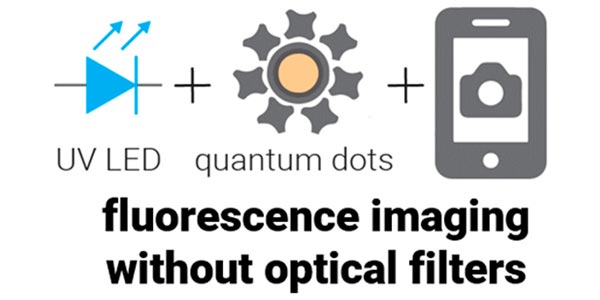Kamal G. Shah, Vidhi Singh, Peter C. Kauffman, Koji Abe, and Paul Yager.
Analytical Chemistry. 2018, 90 (11), pp 6967–6974.
Abstract
Paper-based diagnostic tests based on the lateral flow immunoassay concept promise low-cost, point-of-care detection of infectious diseases, but such assays suffer from poor limits of detection. One factor that contributes to poor analytical performance is a reliance on low-contrast chromophoric optical labels such as gold nanoparticles. Previous attempts to improve the sensitivity of paper-based diagnostics include replacing chromophoric labels with enzymes, fluorophores, or phosphors at the expense of increased fluidic complexity or the need for device readers with costly optoelectronics. Several groups, including our own, have proposed mobile phones as suitable point-of-care readers due to their low cost, ease of use, and ubiquity. However, extant mobile phone fluorescence readers require costly optical filters and were typically validated with only one camera sensor module, which is inappropriate for potential point-of-care use. In response, we propose to couple low-cost ultraviolet light-emitting diodes with long Stokes-shift quantum dots to enable ratiometric mobile phone fluorescence measurements without optical filters. Ratiometric imaging with unmodified smartphone cameras improves the contrast and attenuates the impact of excitation intensity variability by 15×. Practical application was shown with a lateral flow immunoassay for influenza A with nucleoproteins spiked into simulated nasal matrix. Limits of detection of 1.5 and 2.6 fmol were attained on two mobile phones, which are comparable to a gel imager (1.9 fmol), 10× better than imaging gold nanoparticles on a scanner (18 fmol), and >2 orders of magnitude better than gold nanoparticle-labeled assays imaged with mobile phones. Use of the proposed filter-free mobile phone imaging scheme is a first step toward enabling a new generation of highly sensitive, point-of-care fluorescence assays.



